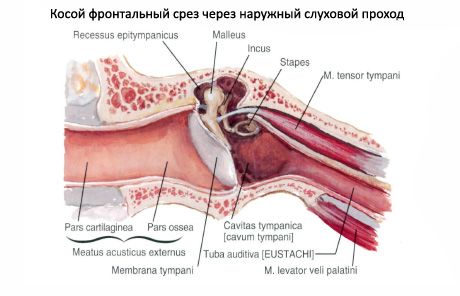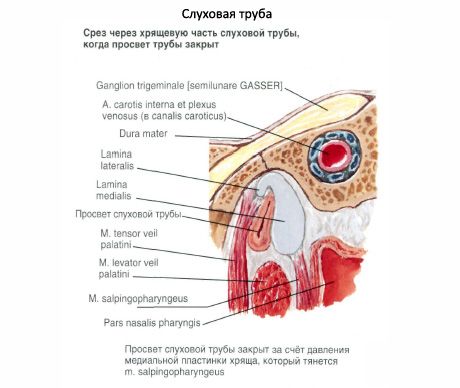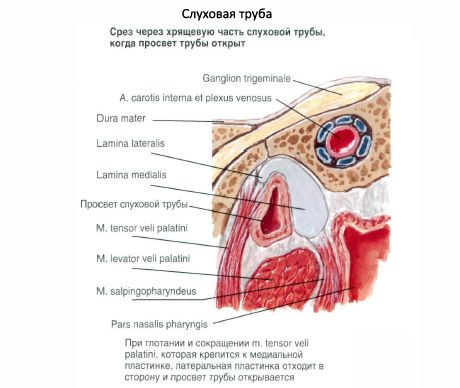Auditory (Eustachian) tube
Last reviewed: 23.04.2024

All iLive content is medically reviewed or fact checked to ensure as much factual accuracy as possible.
We have strict sourcing guidelines and only link to reputable media sites, academic research institutions and, whenever possible, medically peer reviewed studies. Note that the numbers in parentheses ([1], [2], etc.) are clickable links to these studies.
If you feel that any of our content is inaccurate, out-of-date, or otherwise questionable, please select it and press Ctrl + Enter.
The auditory (eustachian) tube (tuba auditiva, s. Auditoria) has an average length of 35 mm, a width of 2 mm. Through it, air from the pharynx enters the drum cavity to maintain pressure in the cavity, the same as the external one, which is important for the normal operation of the sound-conducting apparatus (tympanic membrane and auditory ossicles). In the auditory tube, the osseous part (pars ossea) and the cartilaginous part (pars cartilaginea), consisting of the elastic cartilage, are isolated. The lumen of the tube at the site of their connection is the isthmus of the auditory tube (isthmus tubae auditivae), tapering to 1 mm. The upper osseous part of the tube is located in the eponymous canal of the musculoskeletal canal of the temporal bone and opens on the anterior wall of the tympanum with the drum opening of the auditory tube (ostium tympanicum tubae auditivae). The lower cartilaginous part, which accounts for 2/3 of the length of the tube, has the form of a trough open at the bottom, formed by the medial and lateral cartilaginous plates and connecting them with a membranous plate. In the place where the auditory tube opens on the side wall of the nasopharynx with a pharyngeal opening of the auditory tube (ostium pharyngeum tubae auditivae), the medial (posterior) plate of the elastomeric cartilage of the tube thickens and protrudes into the pharyngeal cavity in the form of a tube roller (torus tubarius). The longitudinal axis of the auditory tube from the pharyngeal opening is directed upwards and laterally, forming an angle of 40-45 ° with the horizontal and sagittal planes.




On the cartilaginous part of the auditory tube, the muscle that strains and the muscle that lifts the palatal curtain originate. When they contract the cartilage, the tubes and its lamina membranacea are drawn back, the tube channel expands and air from the pharynx enters the tympanum. The mucous membrane of the tube forms longitudinal folds and is covered with a ciliated epithelium, the movements of the cilia are directed toward the pharynx. In the mucous membrane of the auditory tube there are a lot of mucous glands (glandulae tubariae) and lymphoid tissue that forms a congestion - the tubal tonsil ( near the tube cushion and around the pharyngeal opening of the auditory tube) (see "Bodies of the blood and immune system").
Where does it hurt?
What do need to examine?
How to examine?


 [
[